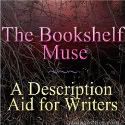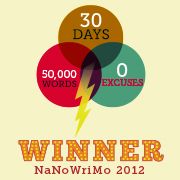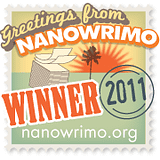Welcome to my weekly series, Designing from Bones, where we use archaeology, mythology and the artifacts of human history to find and design stories. Join me today as we travel one of the most renown paths in human history, the Silk Route.
Gather near dear friends for today we step through the misty portal and into the past, traveling along the Silk Road in order to discover its significance, the cultural exchanges it brought and the stories it was to tell.
Trade Needs and Theft
Trade grew from the need of civilizations to acquire goods and resources not available in their home regions. This trade was often driven by empires, conquerors and religious establishments.
The Silk Route is one of the greatest trade routes ever designed, stretching over 4000 miles by land from Italy to the Chinese Pacific coast and by sea to Indonesia. The route is believed to have started during the time of Alexander the Great given his need to supply his forces across a rapidly growing Empire. After Alexanders death Ptolemy and others continued trading along the route exchanging goods, horses and slaves. The route added in new peoples and nations for several hundred years, expanding its reach westward until finally connecting to China in 200 BCE.
The Chinese held one vital resource, silk, and readily traded it for a wide variety of required goods and treasure over the following 500 years. However, the Chinese silk monopoly ended in the 3rd century when two Christian monks discovered the secret of making silk and spies were sent to steal precious silk worm eggs. Not long after silk began to be produced in the Byzantine Empire and the Silk Route drifted out of use, giving way to Islamic-controlled routes.
Were we to introduce a trade route of this type, stretching through all of the kingdoms of a fantasy world or between the planets of a Science Fiction environment what would each region have to offer it? What would they need from the others? What would each be required to protect or fear the loss of (such as the silk worms of China)?
Once these questions are answered, many stories become available. Protection of trade secrets, spy and espionage activities and political machinations just to name a few. While the life of a merchant is never a dull one, perhaps our hero is an artist seeking new methods to bring him fame back home or a commander tasked with protecting the valuable trade lines.
Conquerors, Adventurers and Death
A new conqueror, this time Genghis Khan and his Mongol hoard, re-established the Silk Route from the early 1200’s until the mid to late 1300’s. During the interim the Islamic trade routes had held a stranglehold between Europe and Asia but they could not resist the power of the Mongols. Genghis breathed life back into the Silk Road and it thrived.
Two famous travelers moved along the Silk Route during this era. One a much lauded noble traveler and the other a far more insidious and ignoble traveler.
 The first was Marco Polo, a Venetian explorer, although he was only 17 when he and his father and uncle, a successful merchant team and headed along the route for China. Marco would end up traveling both the land and sea segments of the Silk Route through China to modern day Burma and back. For 24 years, Marco and his companions adventured through foreign lands before returning loaded with a wealth of treasure and knowledge.
The first was Marco Polo, a Venetian explorer, although he was only 17 when he and his father and uncle, a successful merchant team and headed along the route for China. Marco would end up traveling both the land and sea segments of the Silk Route through China to modern day Burma and back. For 24 years, Marco and his companions adventured through foreign lands before returning loaded with a wealth of treasure and knowledge.
 The second famous traveler of the Silk Route during this era was the Black Death (commonly known as the Bubonic plague although this connection is in dispute). Many studies feel that the Black Death moved along this famous trade route from China to Europe most likely carried by merchants or the rats that hitchhiked with every caravan of the era. The Black Death led to the deaths of approximately half of the European population and changed the course of Western history forever.
The second famous traveler of the Silk Route during this era was the Black Death (commonly known as the Bubonic plague although this connection is in dispute). Many studies feel that the Black Death moved along this famous trade route from China to Europe most likely carried by merchants or the rats that hitchhiked with every caravan of the era. The Black Death led to the deaths of approximately half of the European population and changed the course of Western history forever.
How would the appearance of an outside invader disrupt trade and supply in our world? Would our hero be the invader, the established power or someone caught in between just trying to make a living and protect his family?
What if that invader was a virulent disease such as the Black Death? Imagine a young hero traveling the route and arriving at a village of dying people or sitting at an inn as a man coughs his last bloody breath upon the hero and dies. Watch the reactions to modern pandemics such as swine flu and you’ll have a good idea of how people react in these situations.
Perhaps we will have our hero meet and befriend a great conqueror or ruler as Marco Polo did when he was introduced to Kublai Khan? Consider the many peoples and things that travel between kingdoms and worlds and a host of stories rise to the surface. The Canterbury Tales by Chaucer are a prime example of a travelers story that remains relevant today.
Cultural Exchanges
While the need for goods spawned the Silk Route it was humans that transported those goods. As such the route served as a primary exchange of culture between the West and the East with Central Asia acting as a centralized stew pot of ideas, art, technology and religion.
The route allowed Christianity to advance as far as China while Buddhism missionaries traveled from India with caravans reaching into China and Central Asia. Caliphates of Arabia introduced Islam along the Silk Route in the 7th century and at one time the three great religions brewed together in the melting pot of Central Asia.
Alongside of religion moved art, paper, architecture, music, sculpting, dance and theater. It is easy to see in some areas of what we now call the Middle East the wide variety of cultural influences that at one time blossomed here.
Imagine a story setting that is at the center of a mighty trade route such as the Silk Road. Opposing cultures, ideas, religious beliefs and technologies constantly bouncing off of one another. Place any two people together, the more disparate the better and watch the story grow out of their differences. Opposition is the heart of a strong story. What one will we involve our hero or heroine in? The possibilities are endless.
I now return to you through the misty portal to your own place and time, hopefully wiser, richer and carrying a wealth of stories like Marco Polo once did.
Join me next week when we consider the cryptic messages of an ancient metallic treasure map.
If you’re interested in more great information and ideas on writing, check out my previous Designing from Bones entries found in “Categories” on the side bar.
Peaceful Journeys!













Another great article. Traveling stories are always fun, and a great way to kick off a good idea. Nice work!
Hi – thanks for yet another great ‘Designing from Bones’ post, as always, interesting and provocative. The prospect of trade routes adds a huge dimension to a possible story – both historical and fantasy.
Your point about growing a story out of the differences is something I have often wondered about. One of the outcomes that fascinates me about culture collision is the way the new is always exalted and given status in the receiving culture. At its extreme, we find cargo cults. I wrote a book recently on the New Zealand experience when British industrial technology crashed into the isolated world of the Maori. The result did not dislodge Maori values; Maori quickly acculturated the new – but it drove systems to hyperactive levels. Warfare, integrated with culture on many levels, ripped from one end of the country to the other.
Europe experienced a socio-cultural impact, too, when the silk road opened. I am not talking about “1435” silliness but the actual documented realities of the culture collision, which was two-way. Western iconography, particularly mythologic, has been found influencing eastern depictions of their gods. I hypothesise that these impacts ran slower than those of the British on indigenous cultures in the nineteenth century, because the nineteenth century British had an industrial society – faster, bigger, more efficient than earlier economic systems.
Tons of story scope, I fancy! Thanks again – and looking forward to next week’s post.
Matthew Wright
http://mjwrightnz.wordpress.com
http://www.matthewwright.net
Nice post ROWbro. I especially like reading about Marco Polo. His story always intrigued me as a kid. The adventures were amazing. Thanks again for a ton of info in a small package. ~clink~
I didn’t know that about stealing the silk worm cocoons! Super cool. Fascinating post; loving the connections you make to writers, prompting ideas.
Thanks!
You know I love this stuff! The Silk Road has always fascinated me. And beyond fantasy worlds, I love thinking of alternate history. The “what ifs”.
What if the secret to silk had never been discovered and China had retained it’s stranglehold on the trade right up to the modern era?
What if the Black Death never happened? What would the world be like if half the population of Europe didn’t die. How would religion, culture, and technology have been changed by that?
Before Christianity, Islam flourished along the Silk Road, Greco-Buddism (http://en.wikipedia.org/wiki/Greco-Buddhism) took hold of the Indus valley after Alexander’s conquest and turning Herakles (Hercules) one of its most unusual travelers. Some believe that the demi-god wondered through the Silk Road and reached all the way to Japan, transformed from a heroic slayer of beasts to a companion of Buddhas and protector of temples.
Great post, Gene!
Very interesting, as usual. When I began to think of the merchants bringing disease and, probably, suspicion, I thought of Limitless. We watched this a few months ago. The premise is that a man finds a pill that expands his brain power. However, once his body became dependent on this wonder drug, stopping would cause him to deteriorate and die. For whatever reason, I drew a parallel between this movie and your post. It’s a cool concept. I can’t think of a way to apply it to a story right now, but I’m going to file it away for future use.
Love the post, thanks. I’ll be travelling the Silk Route in 2012 from Xi’an to Istanbul as the tour leader of the Tour ‘Afrique’s Silk Route bike tour. Your post really brings the history of the route to life. I really look forward to reading more of them.
In fact, Gene, I would love to post this to our blog as a guest post. Would you be interested in that?
Another great post Gene! The silk route is full of mysteries and possibilities…..
Brett: Thanks!
Matthew: The heart of fiction is conflict and there are few places where conflict abides so easily as in the difference. Be they of opinion or desire. Interesting about the Maori and I would wager that there are a host of similar stories attached to the various conquering empires and subjugated peoples floating around out there. You always leave the best comments, thanks 🙂
Kerry: Thanks, ROWbro ~clink~
Kathy: Industrial espionage has been around since the day after someone invented the first useful thing. I’d imagine the cave men stole fire, the wheel and spear designs from each other all the time. Ugg knows a secret 🙂
Shea: Nice “what if’s”. Had China remained dominant I would have to guess that the spread of Islam would have been greatly deterred as they controlled the primary trade routes between the theft of silk and the Mongol invasion. Had the Black Plague not hit Europe is more problematic. While massive death occurred, this sudden clearing of population allowed the remaining people to eat (food was a growing issue prior to the plague). Interesting thoughts friend 🙂
Ralfast: Indeed one of the greatest exports of the Silk Route throughout its history was religion. Interesting story about Hercules. This would make a great story or series.
Kate: Thanks!
Catie: Limitless is an entertaining concept. Playing “what if”, the plague was sent intentionally and the only known cure was possessed by a single power along the route. This would then give them a monopoly on life and the ability to charge a premium for the cure/treatment (which, by the way, there is far more money in not curing something. Just saying). Great comment 🙂
Paul: A bike tour, okay, now I am envious. You will have to bring back lots of pics and post them so we can travel the Silk Road with you. I’ll contact you about the re-post idea.
Susie: Thanks!
Another fascinating post, Gene. I learn so much from your Designing from Bones series. And the comments are great, too!
Gene:
Were you a social studies teacher? Or history professor? Could you move in with me and teach my son about “the what if” approach to history? Either that or can you just help him get through 7th grade social studies? Because the way you tell it, it comes alive in stories about people. In conflicts. In opportunities. In mystery.
So, um, can you be here by dinner and what would you like to eat? 😉
Lynn: Thanks 🙂
Renee: LOL! I think my wife might have an issue with that but um, I love roast pork. I have never been a teacher but I’ve loved history since I was very young (7-8 years old). I enjoy finding the correlations between the past and present worlds as well as studying “how” history is decided upon. What I have found is that more often then not it is the best guess of a scholar and generally not supported by a wealth of hard facts and as a result tends to shift with each new discovery (thus the “what if”). All the best with your son, I’m sure he’ll be fine in the long run with a great mom like you 😀
I’m so glad you didn’t have pictures of the actual silk worm in here. I was tentatively scrolling down for fear of insect viewing. Yech! I did however do a little science study on silk last year in Boston at Harvard’s Museum of Natural History, which because it was Harvard, was one of the coolest museums I’ve seen with its collections of animals and a whole room of entymology. I could only bare to look at some but I did check out the silk worm and silk process story.
Great history lesson, Gene!
Hi Gene, can’t say enough good things about your designing from bones series. Love it every time.
Pingback: A Piece of the Action « Lessons From Teachers and Twits
Pingback: Your Health! « Kate Wood's Blog
Pingback: Mind Sieve 10/24/11 « Gloria Oliver
What a great post! Definitely useful for exploring trade and mixing cultures in a story.